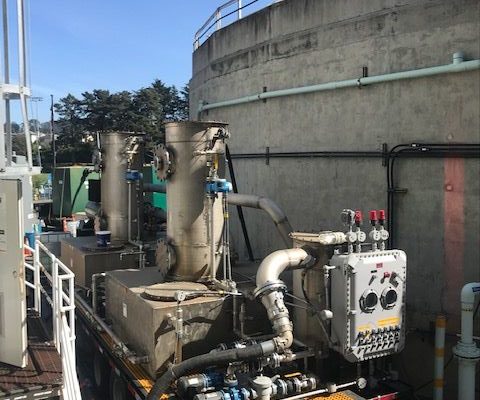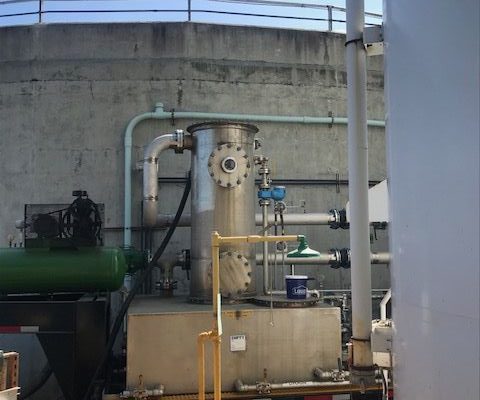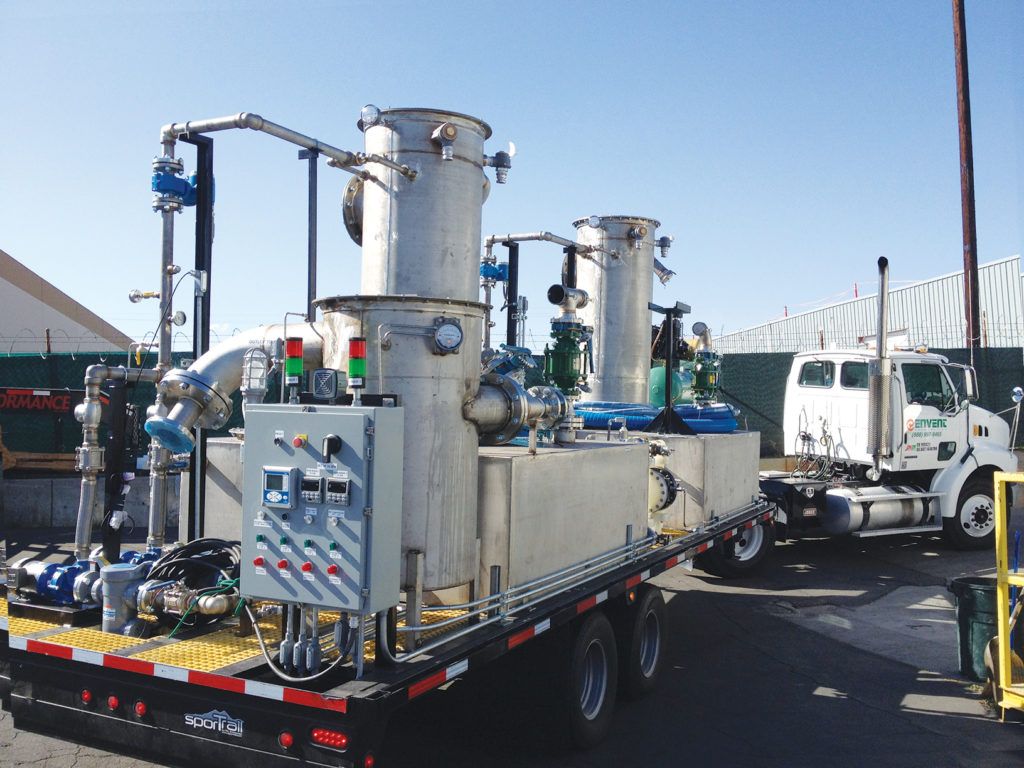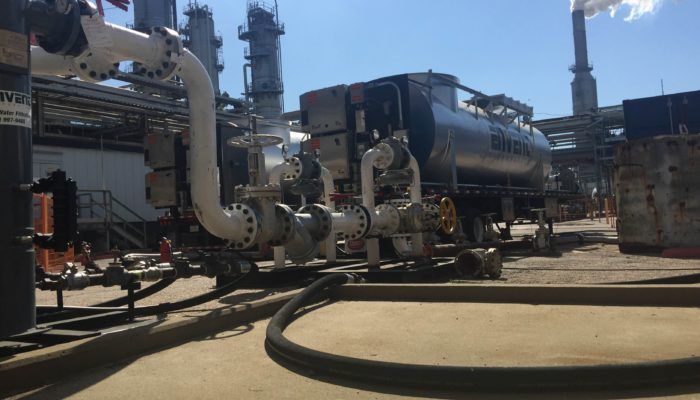Challenge
A refinery in Toledo, Ohio requested Envent to bring their propane storage tanks to an LEL level acceptable for personnel to make entry. Envent would connect their EMECS units to their connection point, and process vapors until the customer samples, and deems degassed.
Solution
This job proved to have many uncertainties not typically noticed at first glance of a normal degas. The Refinery identified early on there would be traces amount of liquid propane in the tanks, After further investigation and after Envent already mobilized to the job, The customer disclosed they weren’t sure how much liquid propane we could expect, but it could be up to 1700 barrels.
Envent couldn’t process the propane at full capacity due to several limiting factors. For one, every refinery wants to be a good neighbor, and Envent’s job location was across the street from a neighborhood. When increasing the flow, Envent’s units become very loud, and the refinery received noise complaints, to which they requested the units’ noise be toned down. Also, the EMECS units utilize an 8-inch connection to allow vapors to flow quickly into their system. Unfortunately, the connection to the tanks was 2-inch, causing a bottleneck on allowable flow, and slowing the project further.
Envent utilized a third-party nitrogen generator to further purge the tanks of LEL. Envent would pressure the tanks with 120psi of nitrogen, then process the vapors through the EMECS units. The customer would sample the tanks’ LEL levels, and if it was not an acceptable level, Envent would repeat the process.
Benefit
The lack of knowledge of how much liquid in the tanks proved a gruesome process. Envent knew of the trace amount of liquid beforehand, and brought their stand-alone propane vaporizers to convert the propane liquid to gas, allowing the EMECS units to process the vapors efficiently. The adjustment Envent made was simple: Keep vaporizing and monitoring pressure gauges until the liquid was gone. Once the liquid had been removed, Envent bypassed the vaporizers, and went direct to their units.
Because of the flow restrictions, the only the approach that made most sense is to run the units at an optimal speed as to not make too much noise, but maximize flow. This was done by ensuring balance between both EMECS units remained at around 50% capacity, and pull off the 2-inch vapor line until the degas was completed.
After the initial removal of the liquid and vapor, nitrogen was introduced into the tanks using nitrogen generators. Within this manifold of propane tanks, there were a lot of places stubborn propane could sit. With this in mind, pressuring up the vessels would have to be a multi-step process, but is very difficult to know exactly how many steps it would take to lower the LEL. Our customer, Envent and their third party all worked in tandem to complete this process, pressuring up, burning the vapors, then sampling the LELs, until eventually, the tank’s LELs were lowered completely.
Among all the scope changes and uncertainties, Envent handled them masterfully, and allowed them to gain this refinerys trust as an engineering-driven thermal oxidation company.
















